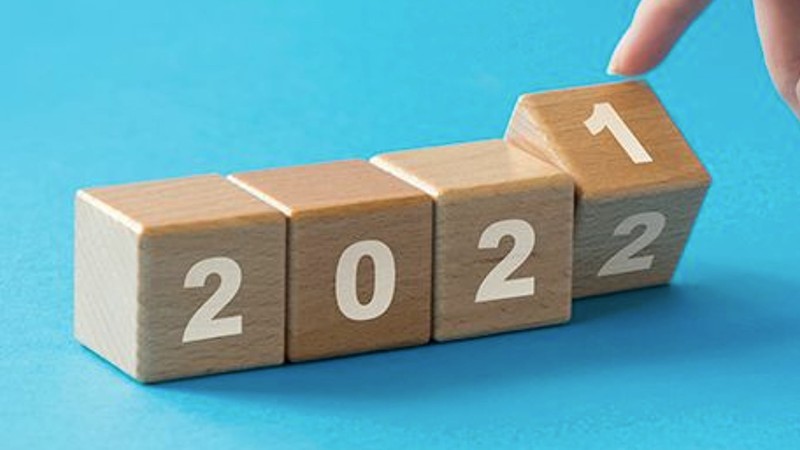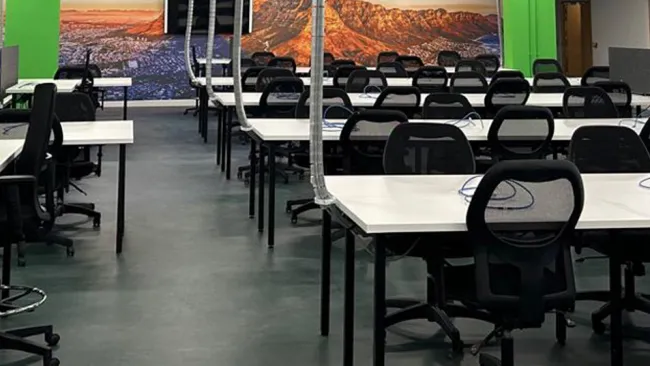The editors of the Customer Strategist Journal came together to discuss their favorite CX stories, trends, and insights from 2021.
Key takeaways:
- Employees are looking for organizations that champion empathy, flexibility, and convenience (or they will look elsewhere).
- Customers want technology that makes their buying experience easier and personalized.
- CX predictions are never set in stone, organizations must be flexible and innovative to deal with new challenges.
Transcript:
Liz Glagowski: Hello, fans of customer experience. On today's episode, I've gathered the editors of the Customer Strategist Journal for an end of the year wrap up. Everyone's got own favorite story or trend to share from a whirlwind 2021. So, let's welcome Judith Aquino, Dylan Haviland and Cara Rosner. Hey everybody.
Judith Aquino: Hello.
Kara Rosner: Hi.
Dylan Haviland: Hey.
LG: Great. Well, thanks everyone for getting together. It's been a whirlwind 2021. We're still managing through the pandemic. Companies are dealing with labor shortages, supply chain craziness, the great resignation and just trying to do business and accelerate their customer experiences and their business. So you guys are right in the thick of it, covering the market, seeing what's going on across the CX world.
We thought why not get together and share some of our favorite stories from this year. So appreciate you all getting together with us. Let's just start from the beginning. How about Judith? What made you stand up and take notice in 2021 when it came to customer experience?
JA: Sure. Well, actually it was the employee experience that made me take notice. I was thinking of an interview I did earlier this year with Heather Younger, the CEO and founder of a consulting firm called Employee Fanatix, where we were talking about how to retain employees during the great resignation and at the time about 4 million people had quit in spring and resignations have accelerated since then.
So I was thinking about how, what Heather alluded to that in addition to higher salaries, people were looking for employers that lead with empathy, flexibility and in a way convenience too is similar to how customers act when they have choices and we're really heading into this kind of era of the empowered employee. Now we don't know how long that'll last but it's interesting to think about what could the long term implications be for an era of empowered employees and how could it change the workforce?
LG: Yeah, that's a great one and it's something that only got worse after the spring and summer. Maybe not worse. Worse for companies but better for employees. They saw more choice. They saw there were different things that they valued and it just became something that people didn't want to just stay with the company they were at. So really good trend that will probably continue into next year, I would think. So Dylan, how about you? What's the story from 2021 that you thought was especially noteworthy.
DH: I thought a great part about this issue was we reached out to so many CEOs, CX leaders and innovators from so many different industries and really a common thing we noticed was using technology not to be something flashy and new to put out there and when I say that, I mean like AI and chat bots and analytics, but using it more to understand the customer journey and essentially to make it easier and make it seamless really in this incredibly digital age we live in.
So really, we're done trying to impress customers. We really want to use our technology for the good of making their customer journey really easy because as we've learned, you're only as good as your last best experience.
LG: Yeah. That's a great point. It's not about the flash or the hype. It's about really getting to what customers need. Yeah and we have seen a lot more brands start to really do that, which is great. And again, hopefully they do more in 2022. Now Cara, you joined us halfway through the year, so I'm interested to get your take on what story maybe stood out for you since you joined us.
CR: Yeah. One interesting thing that I looked at, at the end of this year, it's a really popular time for people to be looking ahead and making their predictions for the coming year. But one thing I enjoyed doing was looking back at the predictions that we, as the CX industry were making this time last year, about 2021 and specifically which predictions missed the mark. So there's three that I really honed in on, where the industry thought things were going to go a certain way and then they bucked that trend. One is, as Judith was talking about the great resignation, I think that a lot of people a year ago thought that things would be more back to normal and specifically that employees would be really eager to return back to the workplace after so much time spent working from home and in more isolated ways.
That just hasn't happened. So from a CX and EX perspective, it's really forcing businesses and employers to rethink their employee engagement. So, that was one really interesting change this year. Another prediction where we missed the mark a year ago is that I think a lot of us thought by this point at the end of 2021, that the business impact from COVID would be mostly over. We thought we'd be more back to normal. Things would be more like the old days and again, that's just not been the case. There's been a lot of challenges and COVID keeps changing with all these new variants coming up. People haven't been that eager to return to the workplace and there's also a whole new complicated set of logistics for businesses with these vaccine mandates in the pipeline.
So that's something that's still very much on the forefront of business leaders, just doesn't seem to be going away anytime soon. And then finally, I think a lot of people predicted that we would have a V-shaped economic recovery, that things would bounce back as quickly as they plummeted in the early days of COVID. And again, like we've talked about, just wasn't the case. There are supply chain issues. It's a really challenging labor market for a lot of companies and a lot of things that we thought would really be more back to normal by this point, we were having this conversation last year, things just aren't quite the same.
LG: Yeah. And you know, that hindsight is really helpful as you start to make predictions for next year to realize that you've got to be flexible. You've got to be willing to just roll with whatever happens because things changed so much and there was really so much unpredictability and uncertainty in 2021, even in, more than 2020. So yeah, very good story in this issue of the Customer Strategist Journal. So for me, this was a story that just came out this week actually and it's not one that we have covered yet but it's the fact that President Biden issued an executive order to make the federal government more customer friendly and improve the customer experience for the citizen, or improve the citizen experience. What I found interesting about that is, well, number one, the bar is pretty low, so there's a lot of changes they can make that will have a big impact, that doesn't need a lot of big multi-year changes.
So for example, if you want to get a passport, now they're going to make it so you can renew it online and send an online payment rather than have to send a check and go to a physical location. I think veterans are going to have a single portal to be able to check their benefits and their healthcare information and even IRS filers will be able to request a call back rather than sit on hold with the IRS, if they've got questions about filing their taxes. Things like that, that in the private sector companies have been doing for years up until now the government hasn't really had an incentive to be able to want to make those sorts of improvements. Why? That's because they've had no competitors. So what I found most important about this story is customer experience changes and transformation and investments have traditionally happened to compete against competitors and to differentiate with your customers.
Now, the federal government has no competitors in a lot of these spaces. So again, there was no reason to do that but what's happened is they're realizing that improvements made to the customer experience are actually improvements that will help their efficiency, lower their costs and even make it easier for the employees to do business. And then the byproduct of that will be a better experience for customers. So I feel like that is an important story that highlights maybe to organizations that weren't as customer focused as others, that you can use customer experience improvements, not only for external customer improvements but also to just enhance your business operationally and lower costs. So, it'd be interesting to see how that goes in 2022 when they actually start to execute on that.
So those are just a few of the articles and a few of the stories that we covered this year and that we find noteworthy. Again, we'll be hitting the pavement right as 2022 begins to do even more next year. So thank you guys, Cara, Dylan and Judith for sharing these stories with us and for those of you in our audience who want to make sure that you're keeping up with us, you can find us at thecustomerstrategistjournal.com at ttec.com or you can find us on pages on LinkedIn, where you can contribute to our ongoing conversation. So thank you all again for joining us and have a great 2022.














